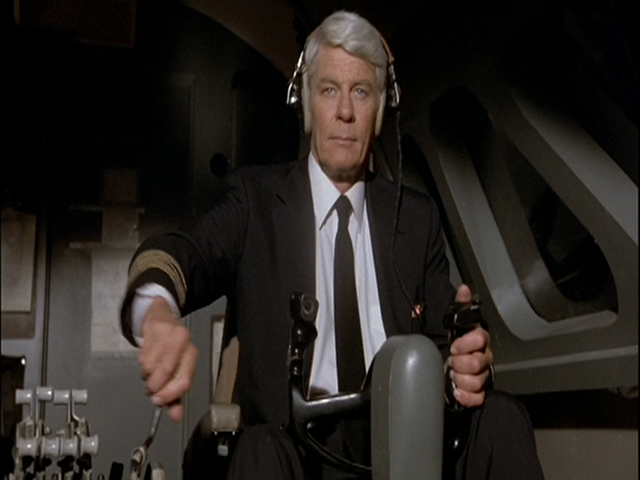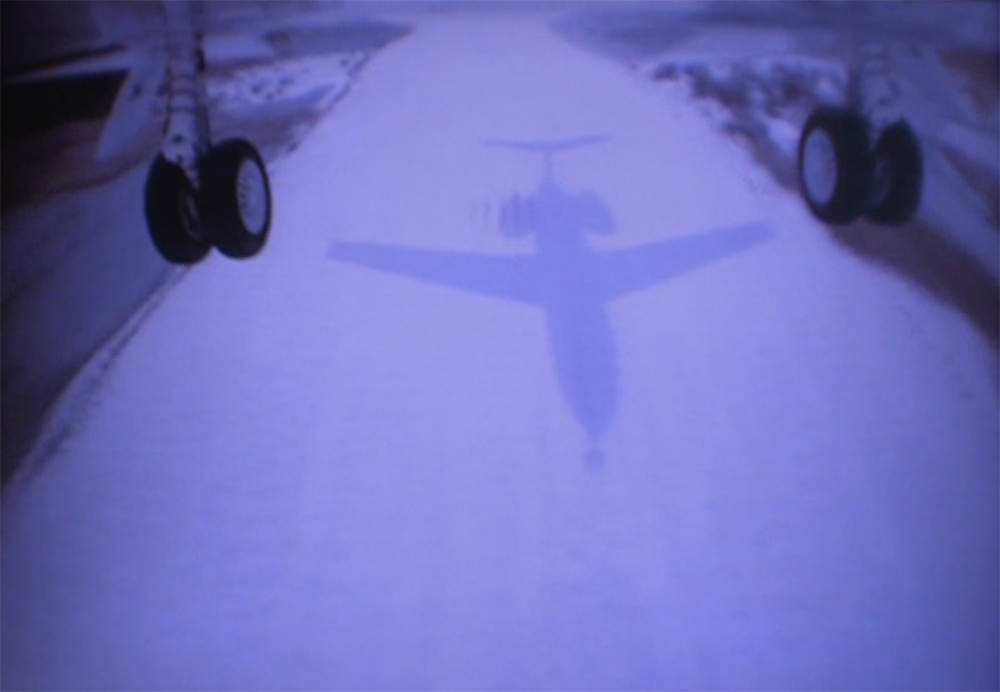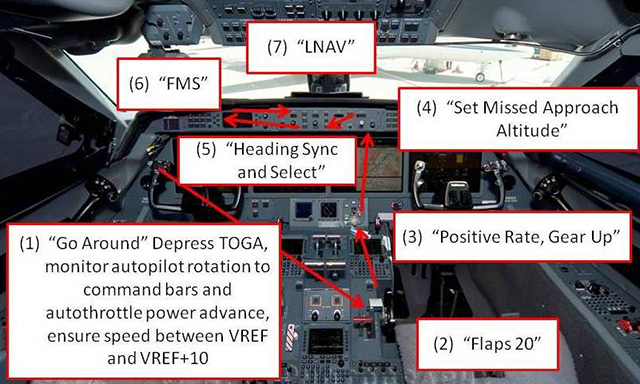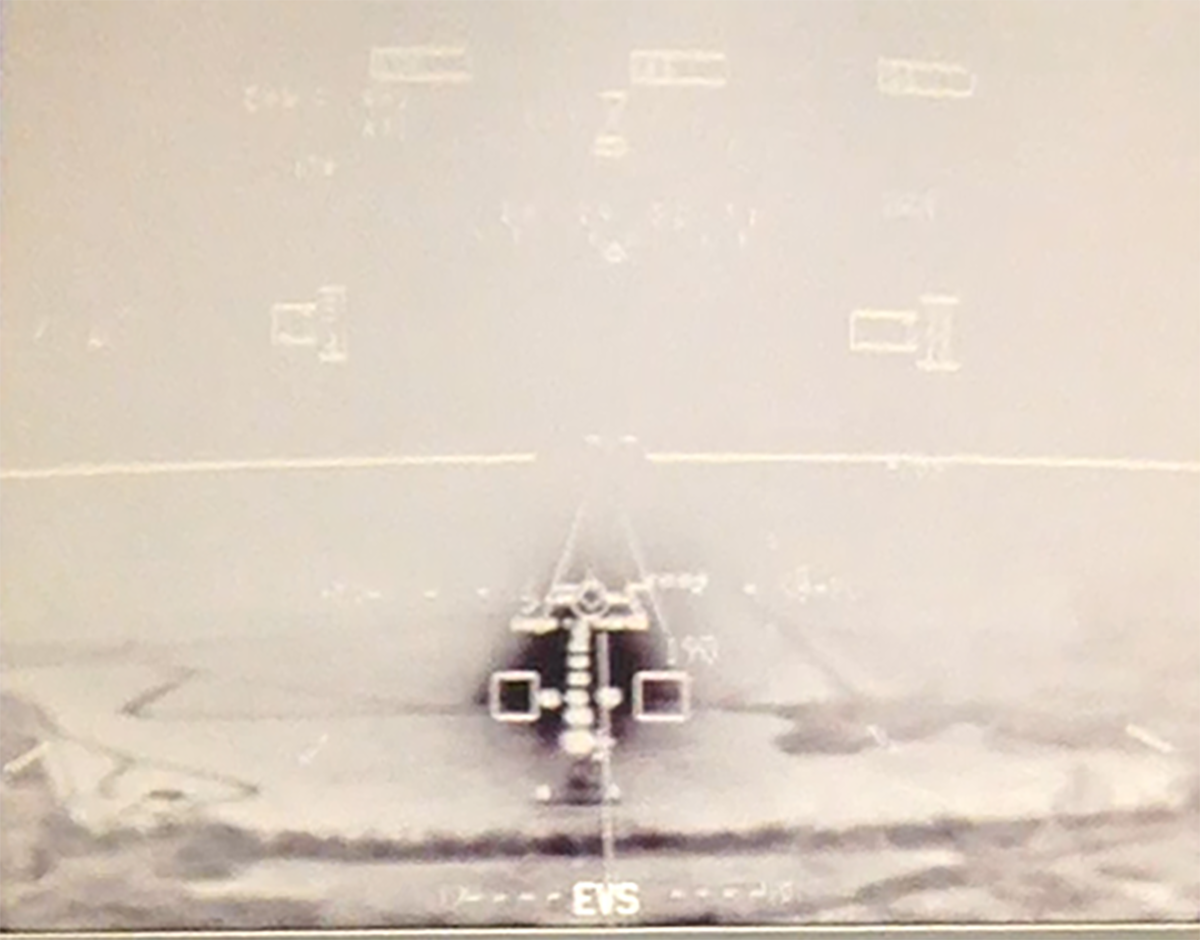I've often thought the first officer's task during an approach to minimums was even harder than that faced by the captain. The Pilot Flying (PF) simply keeps the needles centered while getting ready to go around on a missed approach, until the Pilot Monitoring (PM) either says "Runway in sight!" or "Minimums, go around!" The PM will be very busy, dividing time between the instruments (head down) and looking for the runway (head up).
— James Albright

Updated:
2023-11-01
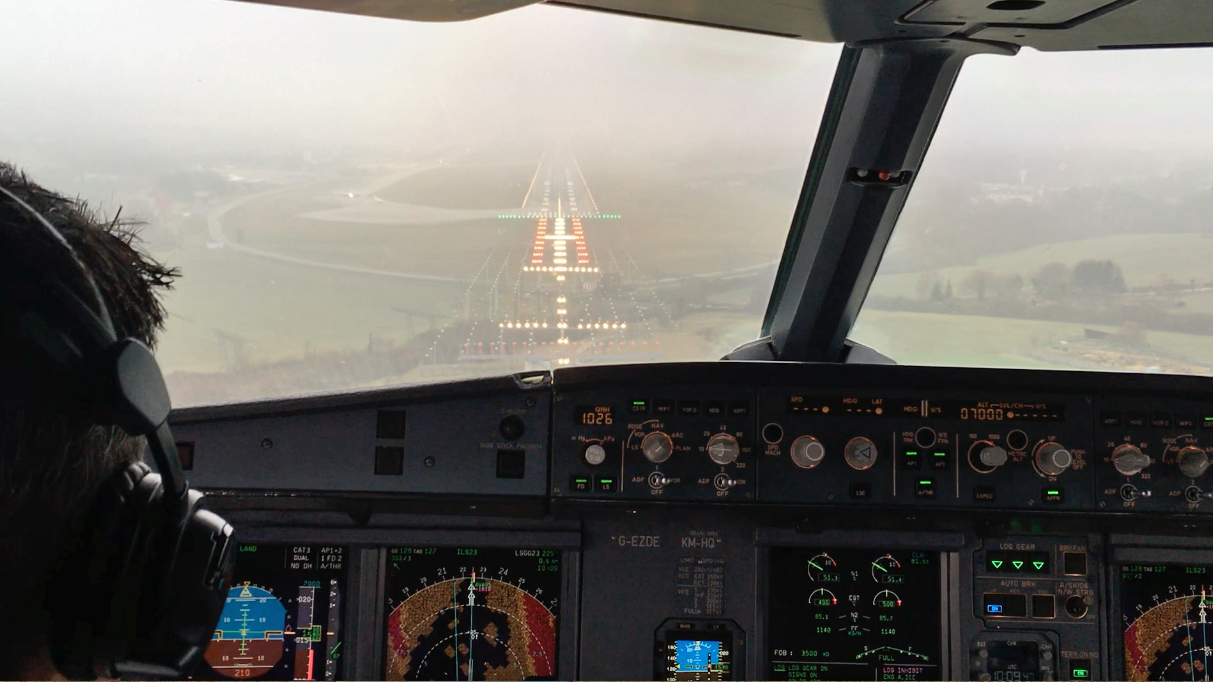
Photo: Cloudbreak at 200 feet, Easyjet Airbus 319 Geneva RW 23, December 14th 2016, Matt Birch (http://visualapproachimages.com/)
There are lots of ways to mess this up. This is rarely taught, only assumed. Let's not assume anything.
1 — The division of duty question (who flies when)
2 — The division of duty question (who prioritizes landing versus going missed)
3 — PM conundrum (where to look and when)

1
The division of duty question
(who flies when)
The "new idea" that comes up every few years
Many years ago, a part of the U.S. Air Force flirted with the idea that when shooting an approach to minimums, the copilot should fly the aircraft and the pilot watches everything and makes the decision to land or go around, taking control of the aircraft at that time. Some advocated that the captain becomes the "land pilot" and the copilot becomes the "go around pilot" so that the copilot is spring loaded to going around.
A few airline friends of mine say they do this routinely. I've even heard of a variation where the captain flies the aircraft with the idea he or she would go around, and the first officer takes control of the aircraft for landing if the runway is in sight.
We won't consider this "new idea" here
I didn't like this idea the first time I heard it and I still don't like it when I hear it again these days. While I think it right that the pilots (both pilots) are spring loaded to going around until both pilots agree it is safe to proceed with the landing, I don't care for changing control of the aircraft with only 20 seconds to go, which is the typical time from a 200 foot decision height to touchdown. So the techniques that follow are based on the more conventional idea that the PF flies the instrument approach, makes the decision to land or go around, and flies throughout. The PM monitors everything and is responsible for saying "Minimums, go around" or "Runway in sight."
2
The division of duty question
(who prioritizes landing versus going missed)
A question of mindset
Given that the PF flies the instrument approach and then either the missed approach or the landing, it may be helpful to keep a few points in mind to avoid "target fixation," the tendency to get so engrossed in a task that you forget that there is a decision to be made. I've heard pilots preach that it is always safer to go around and that your mind should be set on that at the outset. I would argue that it is always safer except when it isn't. If you are tight on gas, for example, a hasty decision to go around could be the wrong choice.
I agree the PF should start the approach with the idea it will end in a missed approach. This encourages the PF to review the missed approach seriously and lessens the startle effect of arriving at minimums with nothing to see.
I also agree the PM should start the approach with the idea it will end with a landing, to encourage a scan in earnest to achieve visual with the runway.
A couple of anecdotes
I once called "Runway in sight" just as the PF toggled the Take Off / Go Around (TO/GA) button, causing the autothrottles to advance and the autopilot to pitch the aircraft back into the soup. He said he had made the decision as I was making my call and never went "head up" at all. I guess he didn't trust me to make the call in a timely manner or perhaps his head was locked into the go around.
I once called "Minimums, go around" only to hear the pilot say, "now what?" He was so sure we would be landing, he had forgotten the missed approach instructions. (This was in the days before the FMS would have the missed approach preset.)
3
PM conundrum
(where to look and when)
Head up? Head down?
In forty-plus years of instrument flying, I think I've only had to call "Minimums, go around" a handful of times. In that same period, I've probably done so hundreds of times in the simulator. In both cases, my number one fear was missing something in the instruments (head down) while spending too much time looking for the runway (head up). My second highest fear was missing the altitude call while spending too much time looking for the runway (head up) while spending too much time watching the altimeter (head down). Seems like a real Catch-22.
Of course technology has made all of this easier. If you have an altitude alerter that you either set yourself or is automatically set when you select the approach, all you need to do is ensure the number is correct and if it is based on a barometric altimeter make sure you have the correct altimeter setting. Having a reliable ground proximity warning system provides a good backup. But we want to be proactive and be able to back up all the backups. I've ended up with a few techniques.
If the PF is having trouble keeping the needles centered . . .
If the PF doesn't have everything wired (needles centered, airspeed on target, altitude steady) by the final approach fix, things will rarely get better. But they might and if so, move on to the "stable" section which follows.
If things are not stable, the PM should spend most of his or her time on the needles and provide the necessary cues to make them stable. If things are not stable by 1,000 feet above the ground (or minimums if your Standard Operating Procedures so dictate), call for go around. If the stabilized approach criteria are met but just barely, then spend half your time head up and half head down, but time the movement to ensure you are head down just before minimums, lift your eyes and say "Minimums, go around" if you are not in a position to land.
If the PF has everything centered and stable . . .
If everything is wired (needles centered, airspeed on target, altitude steady before the glide slope intercept or with a rock solid vertical velocity on target), then the PM can expect to start with most attention on the needles gradually changing to most attention outside. A typical descent rate for most jets is between 600 and 700 feet per minute, depending on winds. (To be more exact, divide your groundspeed by two and multiply the result by ten.)
To understand "how" to spot the runway, the PM must understand the "what" before the "where." If making the approach in daylight with a distinct ceiling and clear visibility below the ceiling, the "what" is as you would expect, you are looking for a runway. If, on the other hand, the approach is at night you are looking for approach lights. You should have already reviewed the approach light configuration and understand where the lights are in relation to the runway. For more about this: Approach Lighting System. The second hurdle is to understand the answer to the "where" question. The answer is not always straight ahead:
- Offset final approach course. If the final approach course comes in at an angle or ends at a point to either side of the runway, you might need to look at that direction.
- Wind effects. If the crosswind requires a significant crab angle on approach, you may need to first look downwind. This can be surprising the first time you see it. As little as a ten knot crosswind can place the runway off to one side enough to confuse you in the heat of battle.
- Off course but still "stable enough." Many stable approach criteria specify one-half dot deviation in course as acceptable. Depending on the type of approach, that could place the aircraft beyond safe lateral limits. If the needles aren't centered on an approach that ends up at the runway, you need to look toward the needle.
- Vertical angle effects. If the runway has a full set of lights, looking downward from the cockpit as you are accustomed to for a visual approach should be adequate, but you need to realize you are not aiming for the lights, which are well short of the runway. A shorter approach light system, or no approach lights at all, can tempt you to lift your eyes when in fact you need to depress them to the normal glide path angle.
At 500 feet above minimums, I move my eyes up and count ten seconds to myself and look down to my instruments to check for 400 feet above minimums. If I am early or late, I'll adjust my time counting. I repeat this every one hundred feet until 100 feet above minimums. At that point, I keep my eyes focused outside while counting. If I count to ten without seeing what I need to see to land: "Minimums, go around."
A couple of anecdotes
Many years ago I was flying an approach to minimums with an organization that preached "less is more" in callouts and the only required callouts on approach were "visual" and "go around" if called for. So there we were, popping out of the weather fifty feet above minimums when the copilot sent me around. Once we cleaned up and got set for the second approach, I asked why we had to go around. The copilot said he didn't see the runway. He confessed he hadn't looked up after "about a hundred feet" because he wanted to nail the go around call. He was expecting me to announce I had the runway. So we both erred.
About a year before we were certified to fly Enhanced Flight Vision System approaches down to touchdown without "natural vision" of the runway, I shot an approach in the simulator, spotted the infrared view of the runway in the Head Up Display (HUD), and landed. After we stopped, the simulator instructor asked me to look around the HUD. We were zero-zero. He asked the copilot why he didn't call for the go around. He said he thought he spotted the runway but by the time he figured out he was wrong, we were on the ground.
4
PF duties at minimums
(the right mindset)
The pilot flying the approach has a singular responsibility all the way to the point the aircraft arrives at minimums: fly a stable approach that results in on course, on glide path, on speed indications. At that point, the PF assess the situation and makes a decision.
If arriving at minimums just after the PM's "runway in sight" call, the PF's next duty is to find the runway. The PF must know what to look for and where. See the hints given previously, under PM conundrum (where to look and when).
If visual is acquired, will the aircraft be in a position to land in the touchdown zone of the runway? If not, sighting the runway doesn't matter and a go around is called for. But if so, the PF must be prepared to act:
- If the runway is not sighted, the PF must automatically execute a go around as practiced many times before. There is no room for variation or concerns for smoothness to ease the shock of going around for those in back. Then the PF must verify the aircraft is performing as needed: climbing and on course.
- If the runway is sighted, the PF must announce that fact to the cockpit crew so everyone switches from "approach mode" to "landing mode" and everyone has a last chance to voice any objections.
An anecdote
Back in 1985, I was sitting on the ground at March AFB, CA, on "alert standby" in support of the U.S. Navy's submarine fleet. We were flying an EC-135J (Boeing 707) with a Navy battle staff. After a week of alert, another EC-135 was to arrive, go into crew rest, and then take our place on alert. In other words, we needed these guys to land before we could go home. I wandered out to the runway just prior to their scheduled arrival and estimated the ceiling was almost at minimums but they should have had no problem spotting the runway. It was one of those solid cloud decks where they wouldn't see anything until they popped below, but then they would see everything.
I could hear them before I could see them, but then I saw all of the airplane just in time to hear the engines spool up and the airplane disappeared into the cloud deck. A few of our Navy battle staff were pilots and they asked me why they had to go missed. I told them the view from the cockpit of a 707 makes it harder than from a fighter or other aircraft with a bubble canopy. But I suspected there was more to it than that. If anything, the weather was slightly worse on the second approach, but they managed to spot the runway and land. I asked the pilot about it and he admitted that he simply lifted his eyes on the first approach, didn't see the runway, and shoved the throttles forward. The other pilot and the navigator said they saw the runway. For the second approach he forced himself to look downward and that solved it. That pilot suffered some ribbing for a while, but keep in mind this was before we had realistic simulators and the only time we got to practice landing at minimums was when the weather forced us to. (We were based in Hawaii and while the weather could become crummy, those days were rare.)
5
PF/PM duties going around
The primary task in a missed approach is to get the airplane away from the ground. Ideally, you should be able to do that without hitting anything or anyone. To do this, both pilots must have the basic go around procedure memorized to the point of being reflexive. When going missed, each PF action must be executed without hesitation. In one of my Air Force squadrons where smoothness was so important it was a graded check ride item, we would remind ourselves, "there is nothing smooth about a missed approach." While the PF is doing all this, the PM ensures the PF's actions are timely and correct.
Once the go around is initiated, the not hitting anything or anyone should be the next concern. The PF should have memorized the missed approach altitude and any immediate turns in the procedure; the PM needs to keep at least a step ahead of the PF and provide a running commentary of what happens next.
An anecdote
Thankfully, this has only happened to me in the simulator, but I regret to say it has happened more than once. In the simulator you only have a few minutes between approaches and though we brief each approach, we don't really mentally "commit" to them. The go around procedure in the GV was known by some as "to L and back" because the flow looked like an inverted L where you go up the right side of the cockpit, to the left and back to the right. The photo is from a G450, which used the same procedure for a while. Newer generation Gulfstreams completely automated the problem, but back in the GV I found myself flying from the left seat when the guy in the right seat forgot the flow and I forgot the missed approach procedure. All I could do was hit the Take Off / Go Around button, climb, and say "now what?" That must rank somewhere in the top ten ways to impress a check airman.
6
PF/PM duties landing
When switching from flying instruments with no visual references to landing an airplane solely on visual cues, it is important to fall back on the mechanical procedures. In the simulator you can often get away with doing nothing other than raising the pitch to arrest the descent rate, waiting for the wheels to touch, and then doing what is needed to come to a stop. Things are rarely so simple. I have found it useful to give myself a few verbal cues to ensure I don't lapse into the "just let it happen" mode.
- "Centerline!" Many larger jets require a crab into the wind until in the flare, at which point the aircraft is "decrabbed" to ensure the aircraft is aligned with the runway for touchdown. We are often tempted to decrab sooner than later and this can introduce drift serious enough to cause the aircraft to land off the runway. You should be no less vigilant about maintaining runway centerline as you are with the instrument course centerline.
- "Touchdown point!" With low visibility landings with a full set of approach lights, it may be tempting to dive at the first light you see. But these lights are hundreds of feet short of the runway. The other temptation is to land long if the approach is made above or slightly above glide path. Just because you are flying an instrument approach does not relieve the requirement to land in the touchdown point.
- "Stop!" One of the most dangerous phases of flight is when the aircraft is on the ground racing along at a speed that would get you a ticket on the Interstate. The sooner you get to taxi speed the better, so getting those deceleration devices deployed (spoilers, lift dump devices, thrust reversers, etc.) is critical. Many pilots like to coast the airplane in an effort to let the drag of the airplane do most of the work, sparing the wheel brakes. That may be a good technique, but it prolongs your time in what I think of as a "danger zone."
An anecdote
About ten years ago, I flew us down to minimums at Hanscom Field (Bedford, MA) and had to go missed. Because fuel was tight, we immediately opted to divert to Logan International (Boston, MA). At this point in my "senior" career, I had a lot of instrument flying experience and all of this was routine to me. I flew us precisely on the ILS at Logan, despite a 20-knot crosswind, and have to admit I was a bit relieved when the first officer called, "Runway in sight, off to your right, two o'clock." That was an excellent call, owing to the crab angle needed for the crosswind. As I descended visually I relaxed my focus and started to drift off centerline. "Ah, the runway is moving . . ." the first officer said, "need to fix this or go missed again." That snapped me back into the game and retaught me a valuable lesson: the approach isn't over until you are on the ground.
7
Balked landing?
Just because you got the main wheels on the runway doesn't mean the landing is over and you might need to take it around and try again. It would be tempting to think of this as nothing more than a touch and go landing and in some ways it is, but all of that changes as you consume runway and deploy thrust devices. A few considerations:
- If the aircraft isn't firmly in your control when the wheels touch, a balked landing may be your best option. Likewise, if upon landing the runway isn't as long or clear as expected, you might consider balking the landing.
- When balking the landing, ensure any automatic devices have reacted as you intend. A Take Off / Go Around (TOGA) may have actuated, but has the autopilot and autothrottles responded correctly? See Emirates EK521 for an example how this can go horribly wrong.
- If balking the landing results in going back into the weather, are you set up for the proper missed approach instructions?
- Once your drag devices are used (thrust reversers out, etc.) will you be able to takeoff in the remaining available distance?
- Once you are airborne, do you have adequate obstacle clearance?
The solution to much of this is proper preparation. Knowing there is a potential for a balked landing will help you to brief it so you can execute it more effectively. Knowing there are visual illusions that could sucker you into a balked landing will help prevent the temptation to balk the landing unnecessarily. Look at the video for one of our landings in Luxembourg. Right after the "100" call half of the runway disappears. Knowing there is a significant change in runway slope is vital information for this airport.
An anecdote
My first landing on Midway Island was in an EC-135J (Boeing 707), a fairly large airplane with a 130-foot wingspan and four engines mounted below those wings. Before we landed, an Air Force jeep ran down the runway to scare off the many gooney birds (black-footed albatrosses) to make room for us. After I touched down, the birds came back to the runway in front of us and I moved my right hand to the speedbrake handle, considering stowing them to balk the landing. "Let them die if they want to," the instructor pilot in the right seat said. I completed the landing, narrowly missing most of the birds, who were content to let us speed right over them. Some of the birds tried to escape and flew right into us. They were kind enough to leave our engines alone.
I had heard a few stories of pilots losing one or more engines aborting their landings and flying low over the runway. Still, my first instinct was to balk the landing. Sometimes your instincts are wrong.
